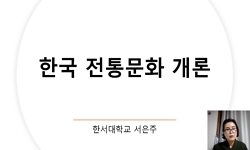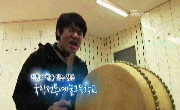한국미술의 해외 국제전 참가의 역사는 곧 한국현대미술사의 이정표였다. 현대미술의 후발 주자로서 서구의 현대미술과 어깨를 견주는 동시대성의 확보에 목말라하던 국내 미술계의 열망...
http://chineseinput.net/에서 pinyin(병음)방식으로 중국어를 변환할 수 있습니다.
변환된 중국어를 복사하여 사용하시면 됩니다.
- 中文 을 입력하시려면 zhongwen을 입력하시고 space를누르시면됩니다.
- 北京 을 입력하시려면 beijing을 입력하시고 space를 누르시면 됩니다.
https://www.riss.kr/link?id=A109292694
- 저자
- 발행기관
- 학술지명
- 권호사항
-
발행연도
2024
-
작성언어
English
- 주제어
-
KDC
609
-
자료형태
학술저널
-
수록면
7-26(20쪽)
- 제공처
-
0
상세조회 -
0
다운로드
부가정보
국문 초록 (Abstract)
이 논문은 1950년대 말 국제전의 참가부터 1960년대 파리비엔날레와 1995년 베니스비엔날레의 한국관 개관전, 그리고 최근 2017년의 비엔날레 출품작에 이르는 몇몇 주요 사례들을 살펴보고, 이를 통해 한국현대미술에서 ‘전통’에 대한 담론이 변모하는 과정을 추적했다.
한국현대미술은 세계 미술계에서 입지를 확보하기 위해 전통의 수사학을 구사하며 서구 중심의 국제 미술계에서 오리엔탈리즘의 시각으로 구축되 온 타자성을 충족시켜왔다. 또한 전통은 국내에 서구현대미술 사조가 토착화되는 과정에서 우리 현대미술의 차별성과 독자성을 주장하는 기반이 되었다. 한국현대미술이 그 미감에 내재되었다고 여겼던 ‘고유한’ 전통을 찾는 과정은 곧 현재의 시점에서 과거를 소환하고 이를 재창작하는 과정이었다. 이전의 전통이 발굴해내야 하지만 손에 잡히지 않는 과거의 실재였다면, 오늘 한국 동시대미술에서의 전통은 상상의 영역에 존재한다. 이제껏 한국현대미술에서 전통의 논의가 보여주듯이, 전통은 취사선택되며, 재조합되고, 만들어진다. 이렇게 만들어진 전통은 과거가 아닌 현재를 반영하고, 새로운 서사를 생산하며, 바로 그 전통의 허구를 드러내는 방식으로 전환된 동시대의 전통을 만들어내며 서구 중심의 국제 미술계가 요구하던 타자성의 전복을 도모한다.
한국미술의 해외 국제전 참가의 역사는 곧 한국현대미술사의 이정표였다. 현대미술의 후발 주자로서 서구의 현대미술과 어깨를 견주는 동시대성의 확보에 목말라하던 국내 미술계의 열망은 국제전이나 해외의 아트 비엔날레를 통해 그 창구를 확보할 수 있었고, 새로운 사조를 직접 목격하고 이를 따라잡는 숨 가쁜 릴레이가 이어졌다. 참여 작가들은 서구 중심의 국제 비엔날레의 현실을 마주하며 서구의 모방이라는 오명을 씻고 한국현대미술의 존재의 이유를 증명하기 위해 분투했다. 이때 전통은 세계가 함께 겨루는 비엔날레의 치열한 경기장에서 한국현대미술의 정체성과 자율성을 위해 꼭 필요한 전략이었다.
이 논문은 1950년대 말 국제전의 참가부터 1960년대 파리비엔날레와 1995년 베니스비엔날레의 한국관 개관전, 그리고 최근 2017년의 비엔날레 출품작에 이르는 몇몇 주요 사례들을 살펴보고, 이를 통해 한국현대미술에서 ‘전통’에 대한 담론이 변모하는 과정을 추적했다.
한국현대미술은 세계 미술계에서 입지를 확보하기 위해 전통의 수사학을 구사하며 서구 중심의 국제 미술계에서 오리엔탈리즘의 시각으로 구축되 온 타자성을 충족시켜왔다. 또한 전통은 국내에 서구현대미술 사조가 토착화되는 과정에서 우리 현대미술의 차별성과 독자성을 주장하는 기반이 되었다. 한국현대미술이 그 미감에 내재되었다고 여겼던 ‘고유한’ 전통을 찾는 과정은 곧 현재의 시점에서 과거를 소환하고 이를 재창작하는 과정이었다. 이전의 전통이 발굴해내야 하지만 손에 잡히지 않는 과거의 실재였다면, 오늘 한국 동시대미술에서의 전통은 상상의 영역에 존재한다. 이제껏 한국현대미술에서 전통의 논의가 보여주듯이, 전통은 취사선택되며, 재조합되고, 만들어진다. 이렇게 만들어진 전통은 과거가 아닌 현재를 반영하고, 새로운 서사를 생산하며, 바로 그 전통의 허구를 드러내는 방식으로 전환된 동시대의 전통을 만들어내며 서구 중심의 국제 미술계가 요구하던 타자성의 전복을 도모한다.
다국어 초록 (Multilingual Abstract)
In doing so, connectingwith Korea’s cultural tradition played a pivotal role. Tradition has always been a double-edged sword. It is a cultural barrier that Korean modernists are trying to overcome in order to be accepted as key players in the international art world. Tradition, on the other hand, is also an index of locality whether in form or narrative, which gives Korean modern art a distinct sense of style contrasting with its western counterparts.
While past traditions were elusive realities that needed to be rediscovered, tradition in contemporary Korean art now exists within the realm of imagination. Tradition is selectively appropriated, recombined, and constructed. This constructed tradition reflects the present rather than the past, generates new narratives, and, by exposing the fictionality of the very tradition it creates, aims to subvert the otherness that the Western-centric international art scene has demanded.
This paper will briefly address key overseas exhibitions that have shaped the perception of Korean contemporary art in the West since the late 1950s and will examine the role of tradition and the directions of Korean contemporary art from a global perspective.
Overseas exhibitions of Korean contemporary art have played a pivotal role in bridging the Korean art community with the global art scene. The international exhibitions provided artists and the public with direct exposure to the latest trends in conte...
Overseas exhibitions of Korean contemporary art have played a pivotal role in bridging the Korean art community with the global art scene. The international exhibitions provided artists and the public with direct exposure to the latest trends in contemporary art. Furthermore, they served as cultural contact points that promoted Korean contemporary art and allowed for its evaluation beyond national borders.
In doing so, connectingwith Korea’s cultural tradition played a pivotal role. Tradition has always been a double-edged sword. It is a cultural barrier that Korean modernists are trying to overcome in order to be accepted as key players in the international art world. Tradition, on the other hand, is also an index of locality whether in form or narrative, which gives Korean modern art a distinct sense of style contrasting with its western counterparts.
While past traditions were elusive realities that needed to be rediscovered, tradition in contemporary Korean art now exists within the realm of imagination. Tradition is selectively appropriated, recombined, and constructed. This constructed tradition reflects the present rather than the past, generates new narratives, and, by exposing the fictionality of the very tradition it creates, aims to subvert the otherness that the Western-centric international art scene has demanded.
This paper will briefly address key overseas exhibitions that have shaped the perception of Korean contemporary art in the West since the late 1950s and will examine the role of tradition and the directions of Korean contemporary art from a global perspective.
목차 (Table of Contents)
- Ⅰ. Introduction
- Ⅱ. Presenting Korean Contemporary Art
- Ⅲ. Transformation through Tradition: Korean Contemporary Art meets the West
- Ⅳ. The Case Studies of Venice Biennale
- Ⅴ. Tradition Converted
- Ⅰ. Introduction
- Ⅱ. Presenting Korean Contemporary Art
- Ⅲ. Transformation through Tradition: Korean Contemporary Art meets the West
- Ⅳ. The Case Studies of Venice Biennale
- Ⅴ. Tradition Converted
- Ⅵ. Dual Lineages
- Bibliography
- 국문초록
- Abstract
동일학술지(권/호) 다른 논문
-
Korean Art in America from 1970s to 2020s
- 명지대학교 문화유산연구소
- Kim, Sunglim(김성림)
- 2024
-
Becoming Contemporary : Youn Myeung-ro’s early works in the 1960s and 70s
- 명지대학교 문화유산연구소
- Kim, Yunyoung(김윤영)
- 2024
-
Human and Non-human Beings in the Anthropocene: Case Studies in Korean Contemporary Art
- 명지대학교 문화유산연구소
- Kim, Jihyun(김지현)
- 2024
-
‘Synchronicity of Asynchronicity’ : Kim Kulim’s Work and the Modernization of Korea in the 1970s
- 명지대학교 문화유산연구소
- Choi, Youngsik(최영식)
- 2024




 DBpia
DBpia






